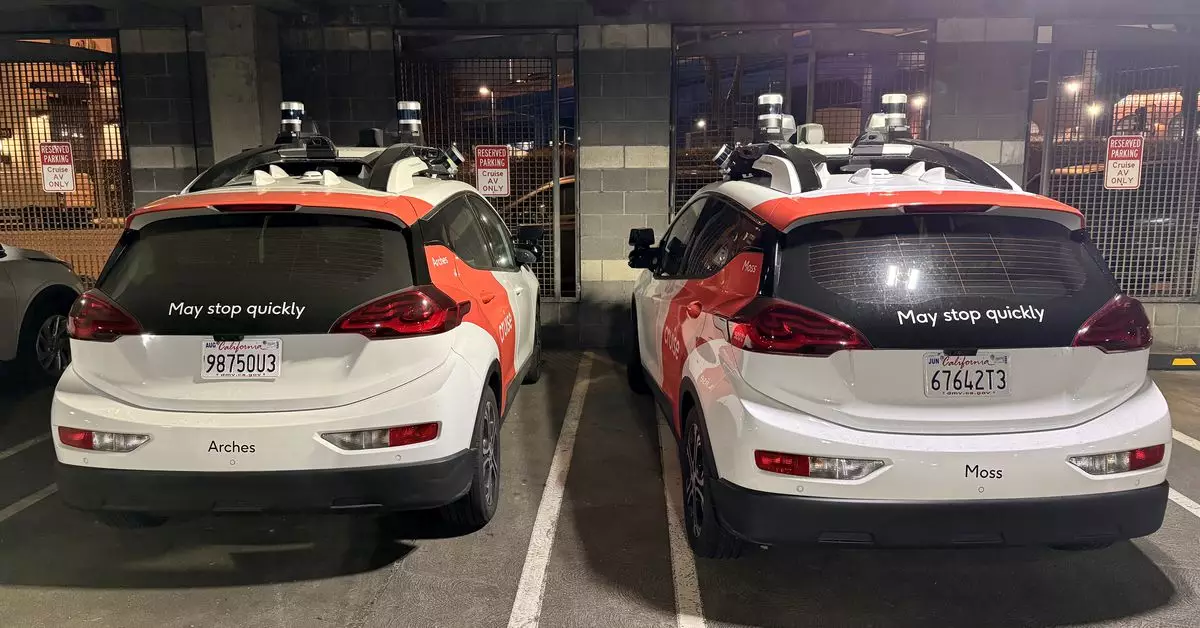In the ever-evolving landscape of transportation technology, autonomous vehicles (AVs) have captured both public imagination and considerable investment. Particularly highlighted in recent discussions is Cruise, the autonomous taxi subsidiary of General Motors (GM), which finds itself navigating turbulent waters. Despite the allure of a driverless future, Cruise faces mounting challenges as it becomes increasingly evident that achieving profitability in this sector is an uphill battle. With substantial financial losses and a controversial operational history, the current state of Cruise prompts a critical analysis of its trajectory and viability in the competitive market for autonomous transport solutions.
The financial health of Cruise paints a worrying picture: a staggering loss of $435 million in the third quarter of 2024, albeit an improvement over the previous year’s losses of $791 million. Such figures indicate that while there is a slight reduction in the rate of financial hemorrhage, the company still struggles significantly. With total revenue reported at only $26 million against expenses of $442 million, Cruise’s ability to generate sustainable income remains questionable. This disparity begs the question: can Cruise effectively manage its expenditures while simultaneously scaling its operations?
Furthermore, in 2023 alone, Cruise incurred losses totaling $3.48 billion, which has led many to view it as a financial burden rather than an asset for GM. The contrasting decisions of other automotive companies, which are retreating from similar AV initiatives, highlight the precarious nature of Cruise’s business model. GM CEO Mary Barra’s continual optimism regarding fully autonomous vehicles raises skepticism; investors are increasingly anxious about the absence of a well-defined path to profitability.
The public perception of Cruise has also been significantly tarnished due to operational mishaps. The October 2023 incident involving a Cruise vehicle striking and injuring a pedestrian not only led to suspension of its services but also spurred widespread criticism regarding the safety protocols of autonomous vehicles. Safety remains a primary concern for pedestrians and lawmakers alike, making it imperative for Cruise to re-establish trust in its technology.
In a bid to regain credibility, Cruise has initiated testing of autonomous vehicles in states like Arizona and Texas. An attempt to re-launch their robotaxi services through manually driven vehicles in the Bay Area may also serve to bridge the gap while the technology undergoes further refinement. However, these temporary measures could come off as reactive rather than strategic, signifying a lack of confidence in their fully autonomous capabilities.
Given the pressing challenges, GM has taken decisive action by restructuring the leadership of Cruise. The ousting of the company’s founders in favor of seasoned professionals from both the auto and tech industries suggests an acknowledgment of existing weaknesses in strategic execution. Though change in leadership is often intended to herald a new direction, it raises the question of whether these executive adjustments can truly catalyze operational success.
Additionally, cost-cutting initiatives, such as workforce reductions and the cancellation of projects like the Origin driverless shuttle, reflect GM’s recognition of the need for fiscal discipline. Barra’s insistence on maintaining a rigorous investment stance in Cruise will be critical as the company attempts to curtail projected losses and stabilize its finances. The promise of a revised funding model, with potential partnerships to share the operational costs, could provide some relief, yet tangible results remain to be seen.
While Cruise embodies the potential of autonomous vehicle technology, its journey is fraught with obstacles that raise significant concerns about its future. The stark financial realities, compounded by public skepticism following safety incidents, pressure the company into rethinking its strategies. Although GM is working to foster a disciplined financial approach and pivoting to new leadership, it is yet unclear whether these measures will suffice in steering Cruise toward a path of profitability and public acceptance.
As the autonomous vehicle sector evolves, the pressure on Cruise to demonstrate viability will only intensify. The coming years will test not only Cruise’s technological capabilities but also its ability to navigate a treacherous landscape filled with growing competition and shifting consumer sentiment. Only time will reveal if Cruise can ultimately overcome these challenges and secure its place in the future of transportation.

